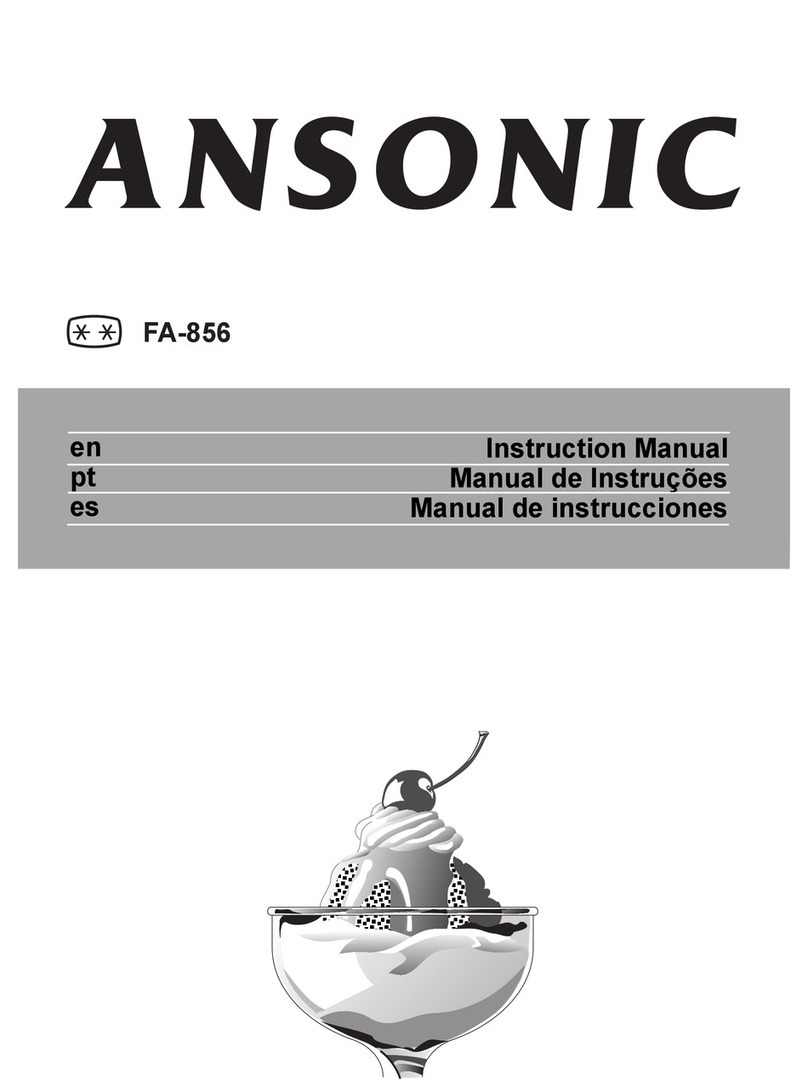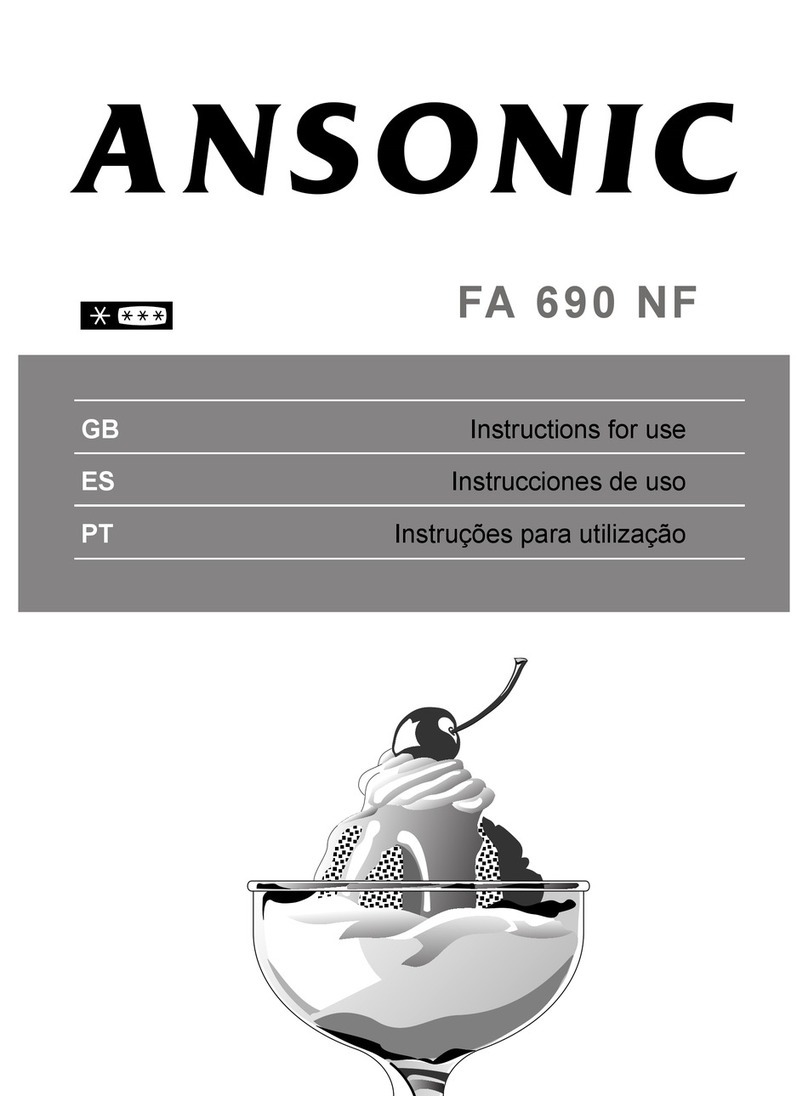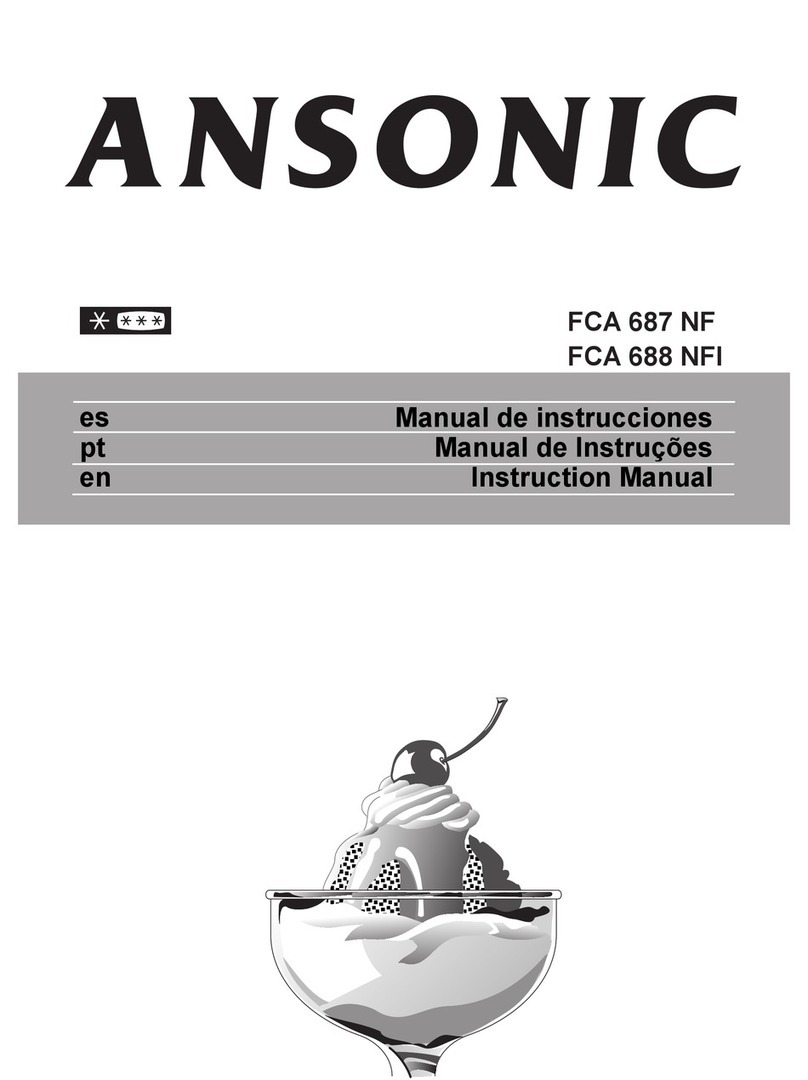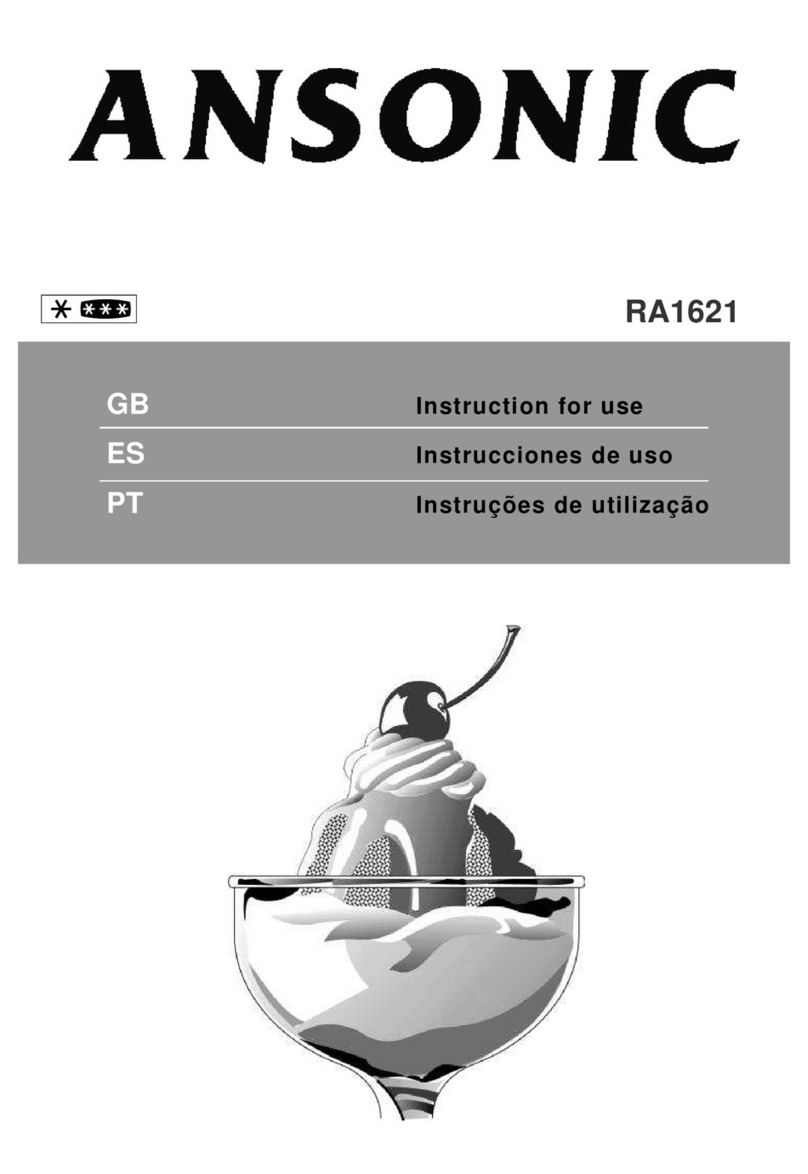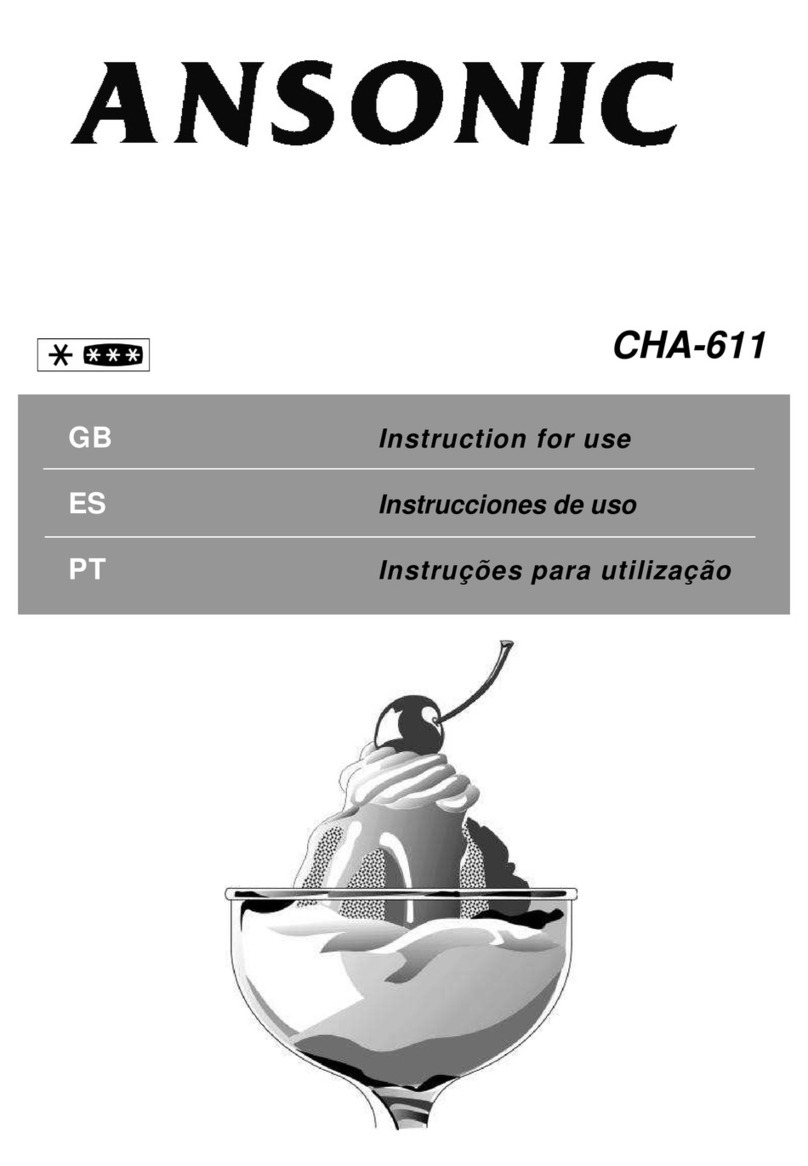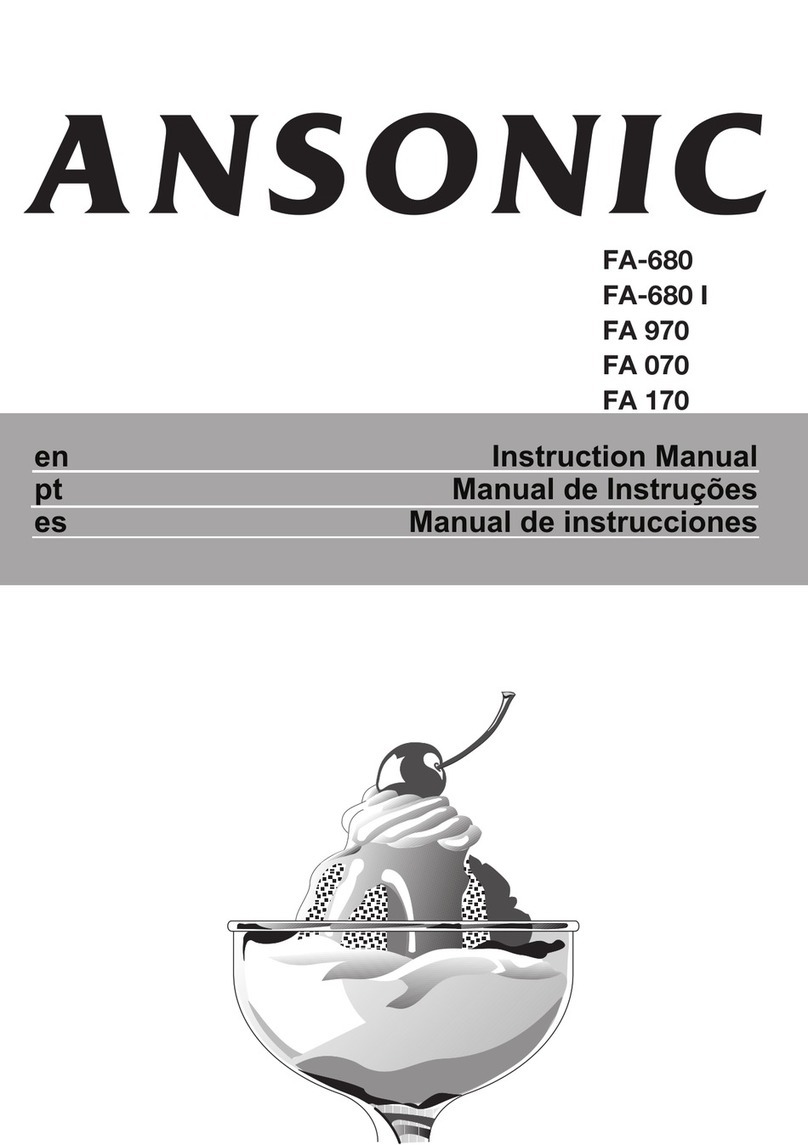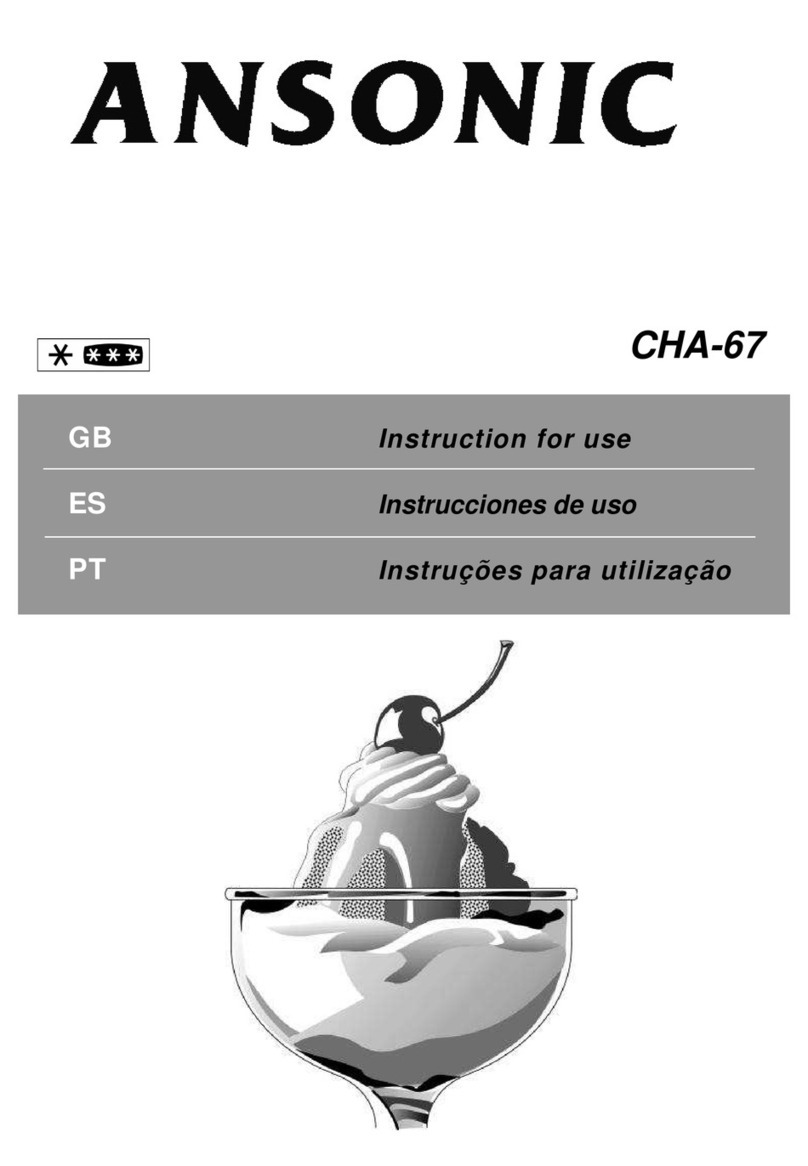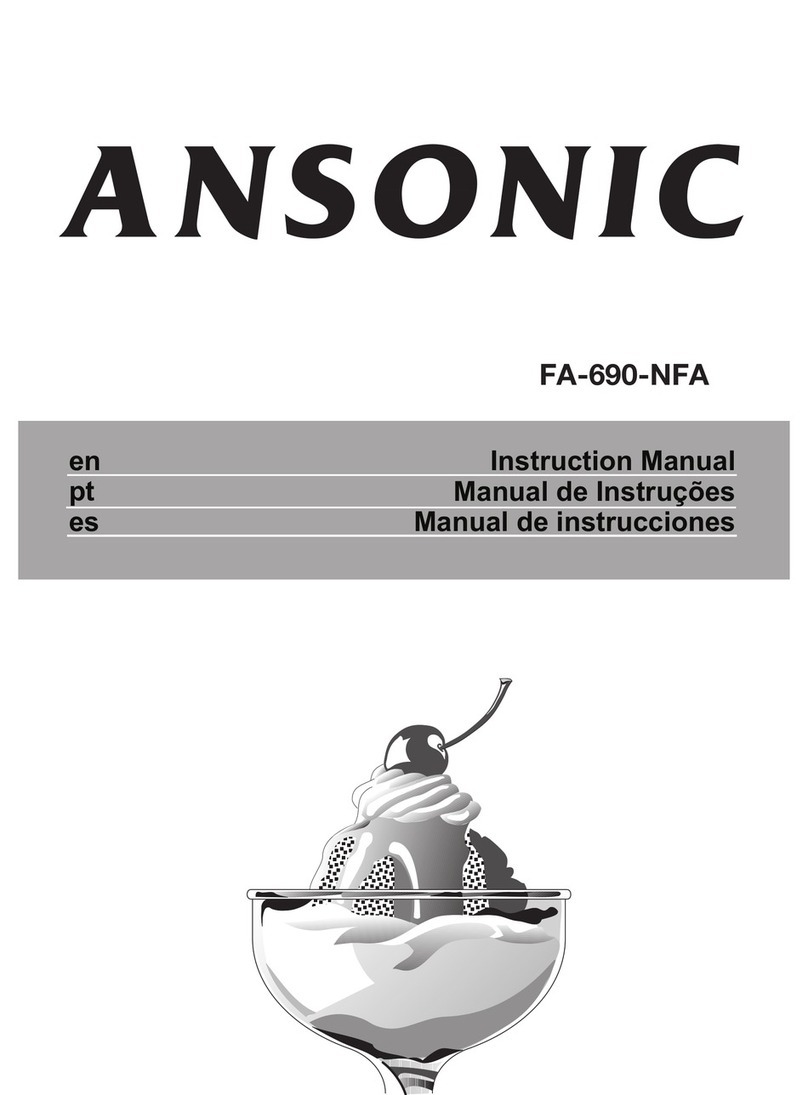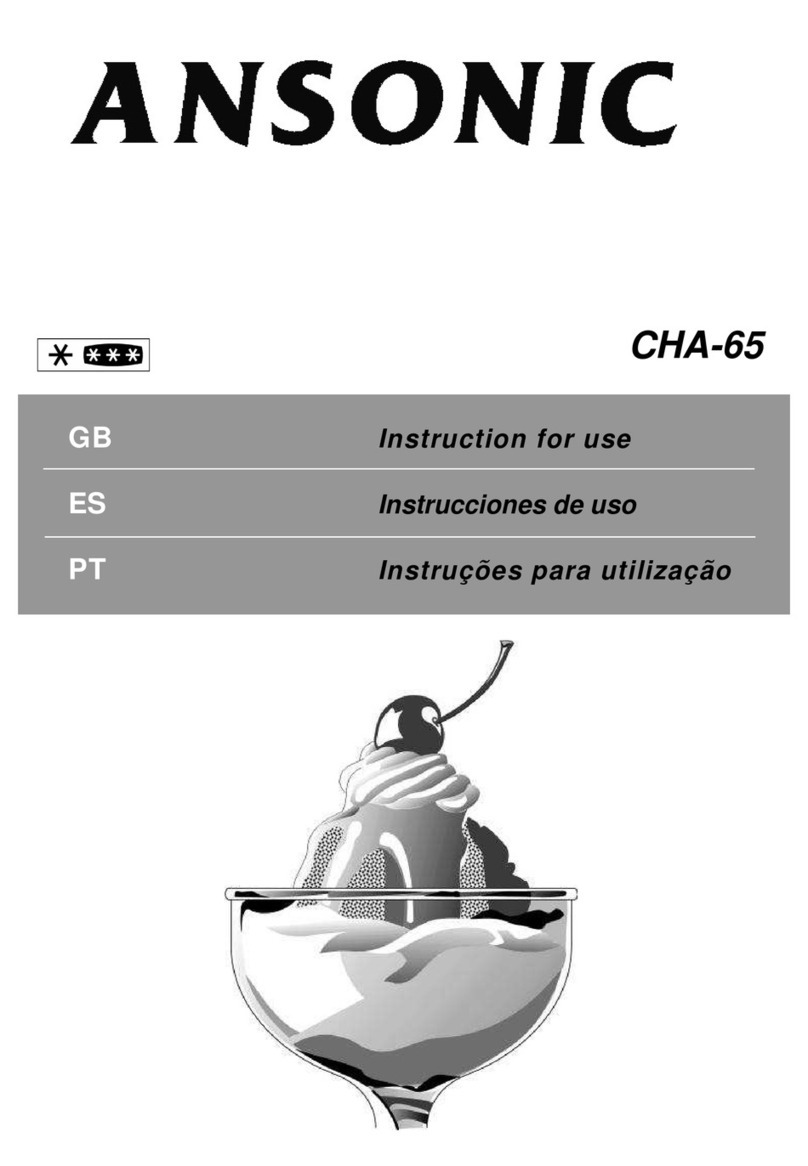
EN
5
.In case of any failure or during
a maintenance or repair work,
disconnect your refrigerator’s mains
supply by either turning off the
relevant fuse or unplugging your
appliance.
.Do not pull by the cable when pulling
off the plug.
.Place the beverage with higher proofs
tightly closed and vertically.
.Flammable items or products that
contain flammable gases (e.g.
spray) as well as the explosive
materials should never be kept in the
appliance.
.Do not use mechanical devices
or other means to accelerate the
defrosting process, others than those
recommended by the manufacturer.
.This appliance is not intended for use
by persons (including children) with
reduced physical, sensory or mental
capabilities, or lack of experience
and knowledge, unless they have
been given supervision or instruction
concerning use of the appliance by a
person responsible for their safety.
.Children should be supervised to
ensure that they do not play with the
appliance
.Do not operate a damaged
refrigerator. Consult your service if
you have any doubts.
.Electrical safety of your refrigerator
shall be guaranteed only if the earth
system in your house complies with
standards.
.Exposing the product to rain, snow,
sun and wind is dangerous with
respect to electrical safety.
.Contact the authorized service when
there is a power cable damage and
etc. so that it will not create a danger
for you.
.Never plug the refrigerator into
the wall outlet during installation.
Otherwise, risk of death or serious
injury may arise.
.If you have a lock on the door, the
key should be kept out of reach of
children.
.This refrigerator is designed solely for
storing food. It should not be used for
any other purposes.
.The label that describes the technical
specification of the product is
located on the inner left part of the
refrigerator.
.Do not hook up the refrigator to
electronic energy saving systems as it
may damage the product.
.If the refrigerator has blue light do not
look at the blue light through optical
devices.
.If the power supply is disconnected
in manually controlled refrigerators
please wait for at least 5 minutes
before reconnectig the power.
.This product manual should be
passed to the next owner of the
refrigerator if the owner changes.
.When moving the refrigerator make
sure that you do not damage the
power cord. In order to prevent
fire the power cord should not be
twisted. Heavy objects should not
be placed on the power cord. When
the refrigerator is being plugged do
not handle the power outlet with wet
hands.
